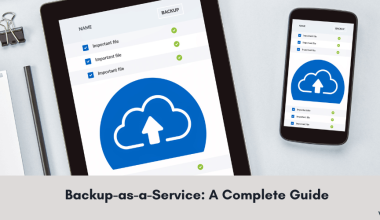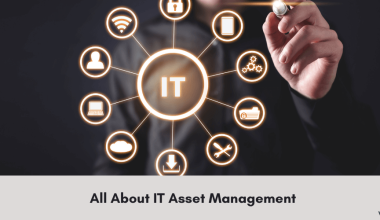Both sophistication and the number of cybersecurity attacks have grown over the years. With technological advancements happening rapidly and remote accessibility of critical information, the challenges of securing data have also increased significantly. Moreover, the business world utilizes cloud technology to store, share, or access sensitive information. While we all know about the rate of cybercrime growth and the average cost it takes to deal with sensitive data loss, not many of us know the basics of cybersecurity.
Here’s a closer look at cybersecurity fundamentals to help you understand what it means from the ground up.
What is Cybersecurity?
Cybersecurity means defending critical systems, devices, and sensitive data from malicious attacks. It protects organizations, their assets, and employees against cyber threats. Also known as Information Technology (IT) security, it revolves around the measures that are designed to deal with the threats against applications and networked systems.
The need for cybersecurity can be realized because the average cost of one data breach was around US$ 3.86 million globally in 2020. It was even higher in the United States and crossed the mark of US$ 8 million (Source). Therefore, investing in preventive measures makes more sense than losing a significant amount when attacked by a threat.
Also Read: All About Network Security: Definition, Types, and Best Practices
Types or Domains of Cybersecurity
As corporate networks become more complex, cybersecurity attacks also evolve over time, requiring a wide range of solutions. Cybersecurity consists of several domains or types, including:
-
Network Security
It involves security measures that protect a computer network from unauthorized intruders by identifying/blocking cyberattacks. It includes layered network threat protection technologies, such as Data Loss Prevention (DLP), Identity Access Management (IAM), Intrusion Prevention System (IPS), and more.
-
Cloud Security
With the increased adoption of cloud technology, the security of cloud servers via a well-defined strategy and tools has become imperative. As a whole, cloud security involves security solutions, policies, and controls that protect the entire cloud deployment of a business – app, data, etc., against a cyberattack.
-
Endpoint Security
It involves creating segments at a micro level around data to secure end-user devices with data/network security controls, threat prevention mechanisms, and other technologies.
-
IoT Security
This domain of cybersecurity protects vulnerable devices that are connected inadvertently to the Internet to create a pathway into the corporate network. It protects such devices via:
- Classification of devices
- Auto-segmentation for network access control
- IPS for prevention of device exploits
-
Application Security
It is meant for web apps directly connected to the Internet and becomes the target for threats like injection, broken authentication, cross-site scripting, etc. It also aims to protect bot-based attacks and prevent malicious interactions with APIs or applications.
-
Zero Trust Security
It follows a granular approach to cybersecurity and protects individual resources via regular monitoring and role-based access control. As a result, it is better than the traditional perimeter-focused security model.
Interesting Read: Zero Trust Security: Definition, Working, and More
Top Seven Cybersecurity Threats You Should Know About
Most attackers seek new ways to evade protective measures and exploit weaknesses. Some of the evolving cyber threats are as follows:
| Threat |
Description |
| Malware | Malicious software variants including viruses, worms, and spyware that gains unauthorized access to cause damage to a system. They can be both fileless or with malicious file attachments |
| Ransomware | Type of malware that tends to lock files, data, and network, or threatens to destroy sensitive data unless a ransom is paid |
| Phishing | A popular form of threat that tricks users into providing sensitive information |
| Insider threats | This is based on business partners, former/current employees, or anyone who has access to a corporate network and has the potential to abuse individual access permissions |
| DDoS attack | Abbreviation for Distributed Denial of Service attack that attempts to crash a server, network, or website by overloading it with traffic from coordinated systems |
| APTs | Abbreviation for Advanced Persistent Threats that involves infiltration of a system by an intruder for an extended period without being detected |
| Man-in-the-Middle Attack | It is a form of eavesdropping attack in which a cybersecurity criminal intercepts messages between two stakeholders to steal data |
Recommended Read: List of Lesser-Known Cybersecurity Threats
Need for Managed Security Services
Earlier, many organizations could get by using individual security measures for prevention against specific threats. However, at that time, neither malware attacks nor corporate infrastructure was as complex as they are now. This often overwhelms even cybersecurity teams by both frequency and type of attack.
You can hire Verito as your trusted managed security service provider for enhanced protection. Whether it is about audit remediation or managing vulnerabilities, our comprehensive managed services cater to all such requirements.
To get into the details of our managed services, click here.














